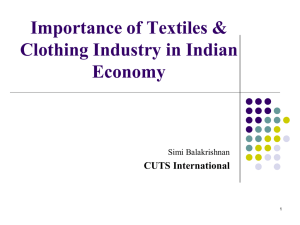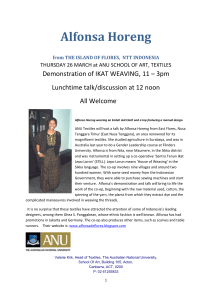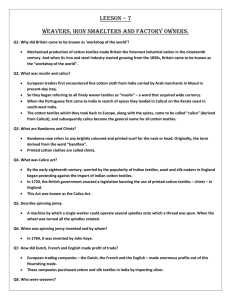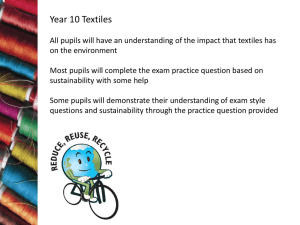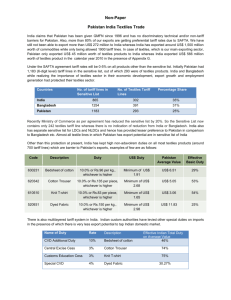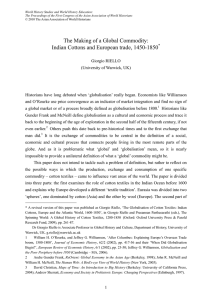His-7 Weavers_Iron_Smelter_Factory Owners
advertisement
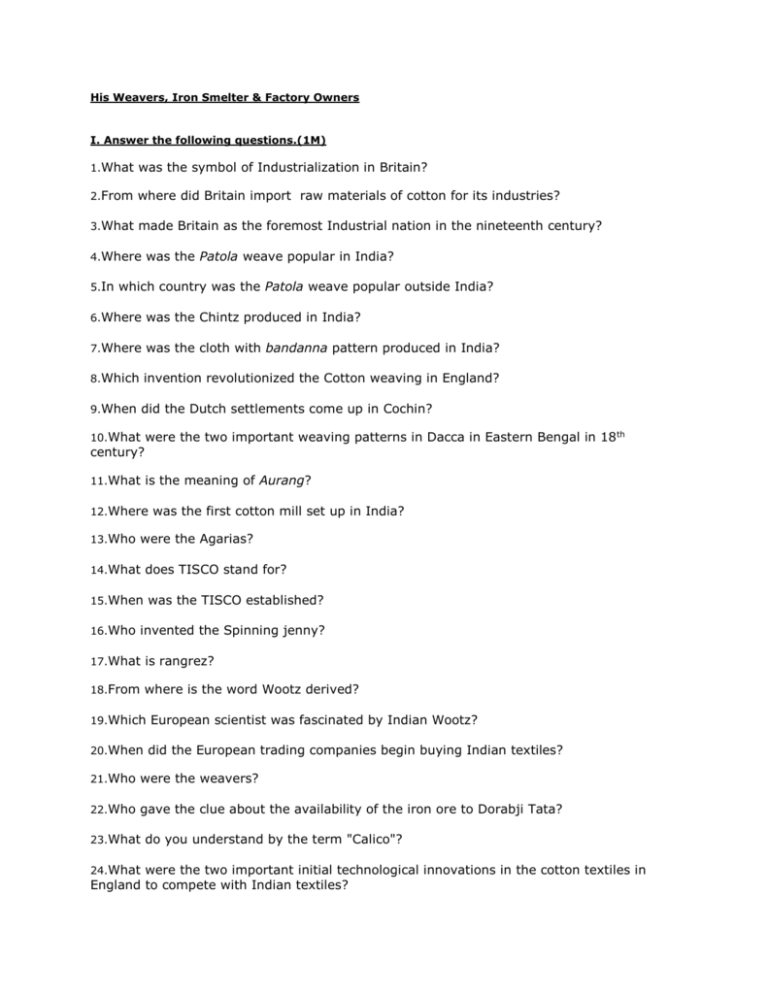
His Weavers, Iron Smelter & Factory Owners I. Answer the following questions.(1M) 1.What was the symbol of Industrialization in Britain? 2.From where did Britain import raw materials of cotton for its industries? 3.What made Britain as the foremost Industrial nation in the nineteenth century? 4.Where was the Patola weave popular in India? 5.In which country was the Patola weave popular outside India? 6.Where was the Chintz produced in India? 7.Where was the cloth with bandanna pattern produced in India? 8.Which invention revolutionized the Cotton weaving in England? 9.When did the Dutch settlements come up in Cochin? 10.What were the two important weaving patterns in Dacca in Eastern Bengal in 18 th century? 11.What is the meaning of Aurang? 12.Where was the first cotton mill set up in India? 13.Who were the Agarias? 14.What does TISCO stand for? 15.When was the TISCO established? 16.Who invented the Spinning jenny? 17.What is rangrez? 18.From where is the word Wootz derived? 19.Which European scientist was fascinated by Indian Wootz? 20.When did the European trading companies begin buying Indian textiles? 21.Who were the weavers? 22.Who gave the clue about the availability of the iron ore to Dorabji Tata? 23.What do you understand by the term "Calico"? 24.What were the two important initial technological innovations in the cotton textiles in England to compete with Indian textiles? II. Answer the following questions.(2M) 1.Which country was known as the "Workshop of the world" ? And why? 2.What do you understand by "Piece goods"? 3.Write the names of some important weaving communities in India. 4.Write the names of the towns that emerged as important new centres of weaving in the late 19th century. 5.How did the development of cotton industries in Britain affect textile producers in India? 6.Write about the popularity of the printed Indian cotton cloths in England and Europe. 7.What happened to the weavers and spinners who lost their livelihood? 8.What were the factors that enabled Bombay to become an important centre for cotton textiles? 9.Why was the sword of Tipu Sultan so special? Explain its features. 10.What does the account of Francis Buchanan tell us about the technique of Wootz steel? 11.Why did iron smelting industries decline in the 19 th century? 12.Why was the Calico Act enacted in England? 13.What were reasons for the decline of Indian textiles? 14.Write with examples about the connection between the Indian textiles and the national movement. 15.Why did the Iron smelting in India decline by the end of 19 th century? 16.Why did wool & silk produces in England protest against the import of Indian textiles in the early 18th century? 17.How did the decline of Indian textiles affect weavers in India? III. Answer the following questions.(3M) 1.What problem did the India textile industry face in the early years of it development? IV. Answer the following questions.(4M) 1.How can we trace out the history of Indian textiles in the words of other languages? OR Textile words tell the history of Indian textiles - Explain with examples. 2.What were the problems faced by the Indian textile Industry in the first few decades? 2.TISCO was set up at an opportune time"- Explain the statement with examples. 3.How do the names of different textiles tell us about their histories? 4.What helped TISCO expand steel production during the First World War?
